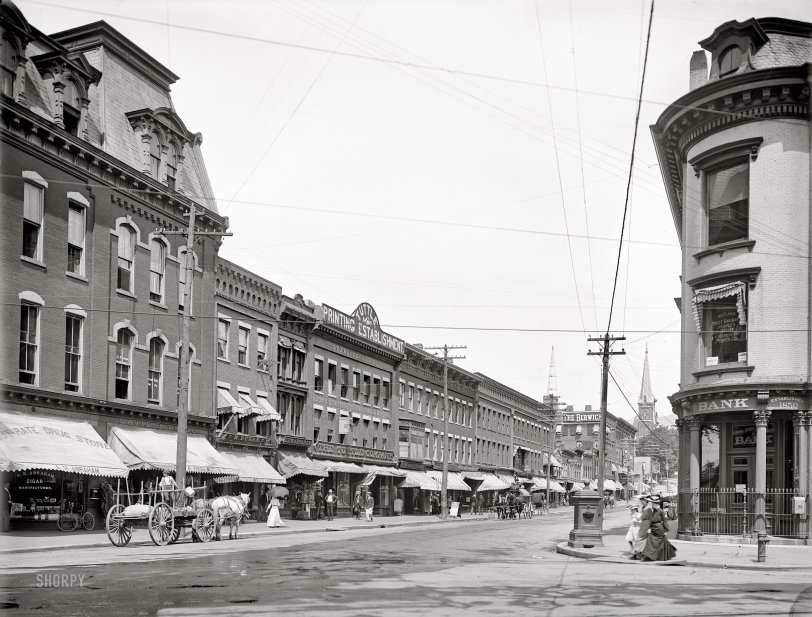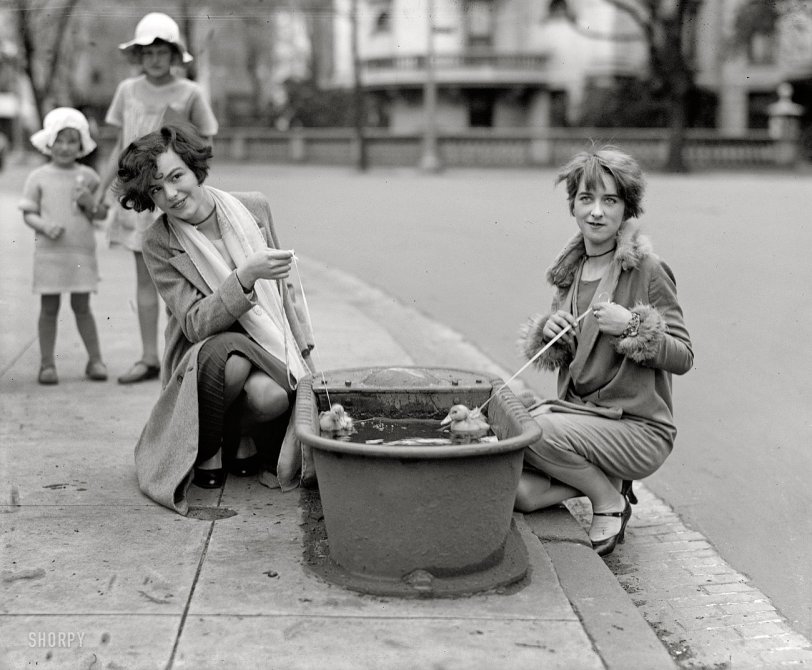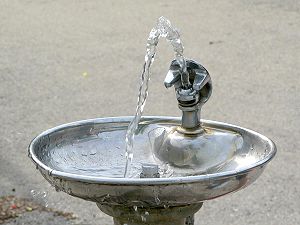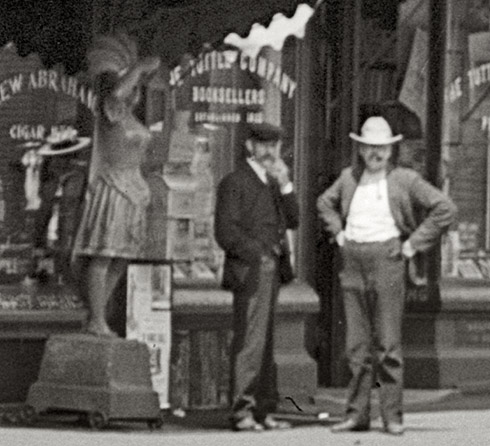


Framed or unframed, desk size to sofa size, printed by us in Arizona and Alabama since 2007. Explore now.
Shorpy is funded by you. Patreon contributors get an ad-free experience.
Learn more.

- Lofty addition
- In 1912
- Keenan Building
- Six years old
- Taken from the P.J. McArdle Roadway?
- It stood only 47 years
- Three track mind
- Incline to the right
- Reach for the sky, 1912 style
- No clean sweep
- Same Job Title, Same Face
- Sadly Lost
- Beautiful ...
- Where you get your kicks
- Aim High
- Pueblo Revival sisters
- Pueblo Neoclassicism
- Milk Man
- Regional dialect.
- Spielberg's inspiration
- Great Photo
- Loaf Story
- Do you still have the Rakes category?
- Could almost be a scene from the 1957 movie 'Hell Drivers'
- The Wages of Fear.
- Conspicuous by their absence
- Got Milk?
- All that aluminum
- No lefties
- Smoke 'em if you've got 'em
Print Emporium
Center Street: 1904

Circa 1904. "Center Street, Rutland, Vermont." Our second look at this charming town. 8x10 inch dry plate glass negative, Detroit Publishing Co. View full size.
A fountain to provide relief for horses, as well
Public fountains during this time were for both humans and horses. That accounts for its odd appearance.
In many towns, a ladle or cup would also be attached to the fountain for benefit of the human thirst-quenchers.
Equine filling stations
The water in the fountain is running down into a bowl. Not the most practical way to present driking water to humans.
Instead, these fountains were located right next to the street so they could provide drinking water to horses. Carriage horses and wagon horses needed to be able to eat and drink during the work day just like their human caretakers. Feed bags covered the food part and these fountains took care of the water requirement.
[Horse fountains usually looked like bathtubs or watering troughs. - Dave]


Moving Ahead
I've seen Cigar Store Indian statues on Shorpy before, but never female and never on wheels. Was this the start of the feminist movement? The statues being on wheels and all. Oh, nevermind.
Rutland, Vermont & Tokyo, Japan
Students of Japanese art and culture will recognize the Tuttle Company as the springboard of the illustrious Charles E. Tuttle publishing house, now Tuttle Books. An excerpt from Tuttle's obituary in 1993 outlined his roots: "Tuttle was born in Rutland, Vermont, in 1915, attended local schools in Rutland, Exeter Academy for two years, and then Harvard, majoring in American history and literature. He was the sixth generation of the Tuttle family born in Rutland, where the first Tuttle company opened for business in 1832. The early Tuttles were in printing, newspapers, bookselling, legal stationery and property. (Richard Tottel, a 16th-century ancestor, printed and published books in London between 1570 and 1590.) Charles's own father was an early publisher of black American literature, and also a noted rare book dealer, and Charles joined the family firm after graduating and working for a year in the library of Columbia University." The full obituary can be found here.
Bubbler variant
The drinking fountain is an elaborate version of what is called a bubbler in Milwaukee, in Wisconsin, and in other isolated locations on our planet. For reference, see: http://www.jsonline.com/blogs/lifestyle/31844089.html and/or http://en.wikipedia.org/wiki/Bubbler

Cowboy and Indian
Spotted this outside the cigar store ...
The cigar store Indian AND a cowboy.

Don't bank on it!
My, those iron gates around the bank's entrance! When the bank was closed, it was REALLY closed! I bet it was not robbed very often, especially since getaway cars had scarely been invented.
Possibly an old municipal well
Before the modern convenience of piped in running water, there were town wells, this may be what they did with one of them. There are a few such wells converted to fountains here in the South, such as the Old Well in Chapel Hill.
Well, well, well ...
The corner adornment might be an artesian well. There used to be one in my hometown of Kewanee, IL. The water was cool and tasted delicious.
On the corner
To the right, on the corner in the front of the bank, what is that? It looks like a running water fountain.

























On Shorpy:
Today’s Top 5